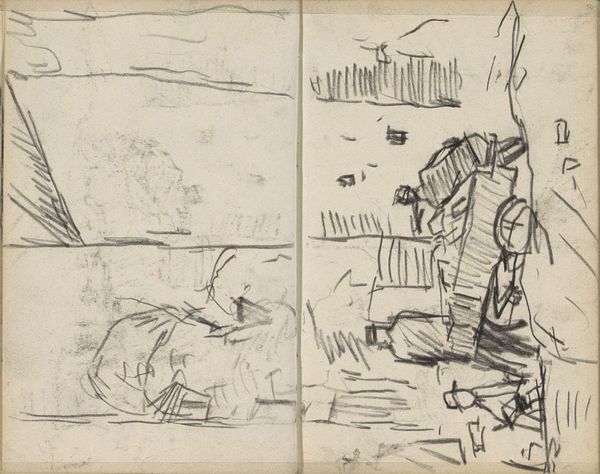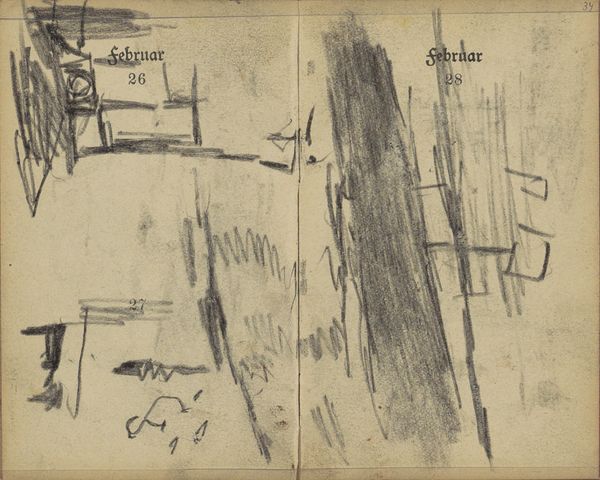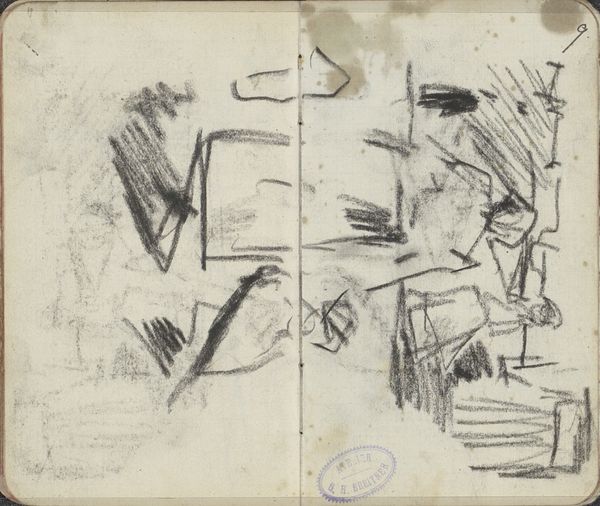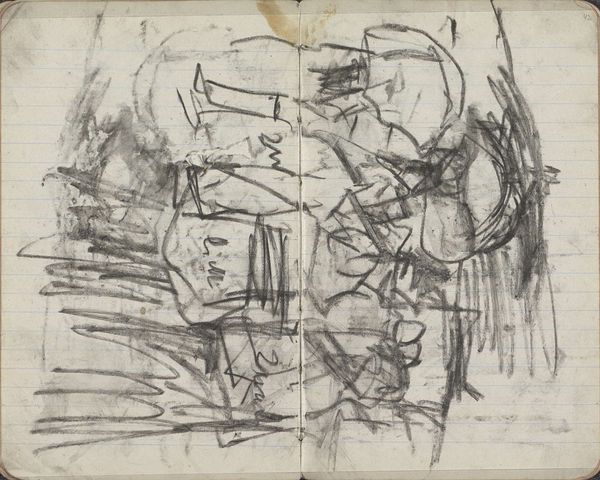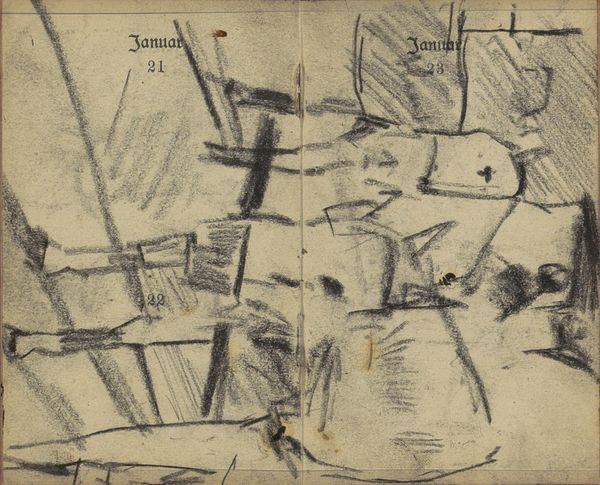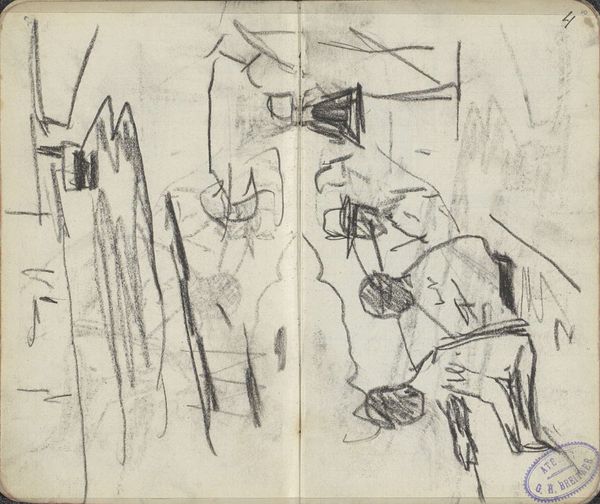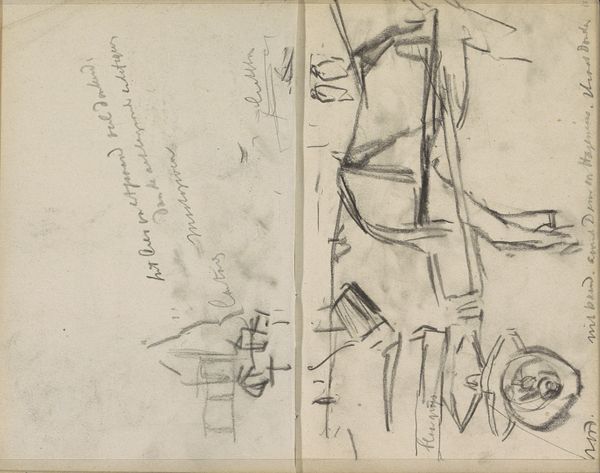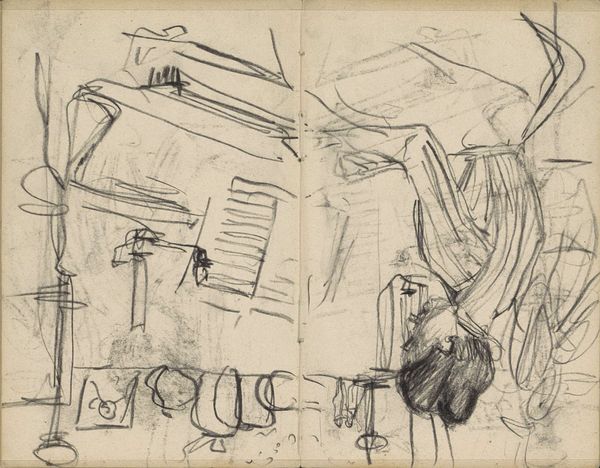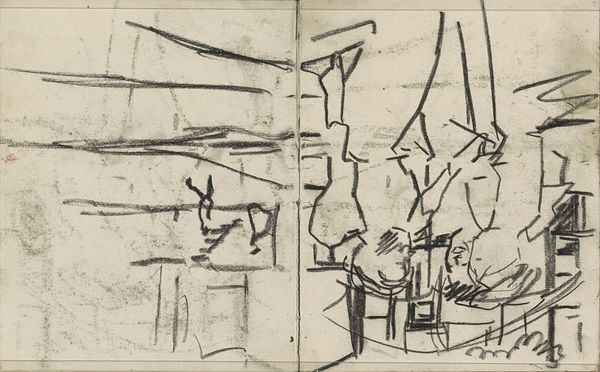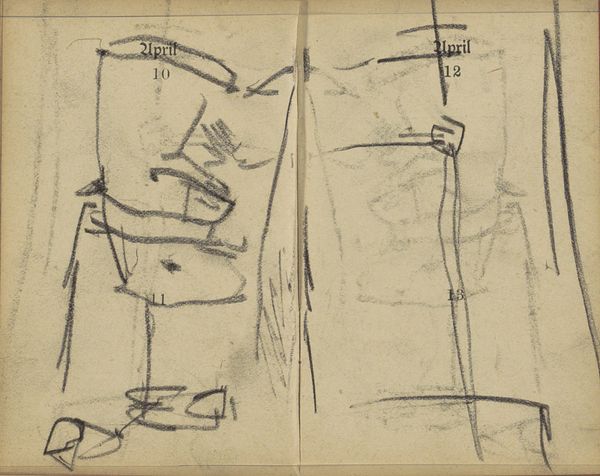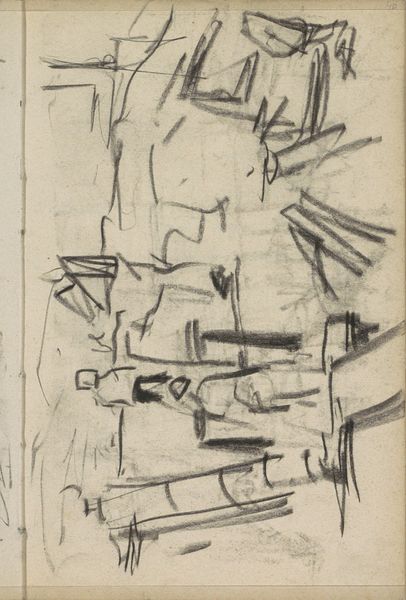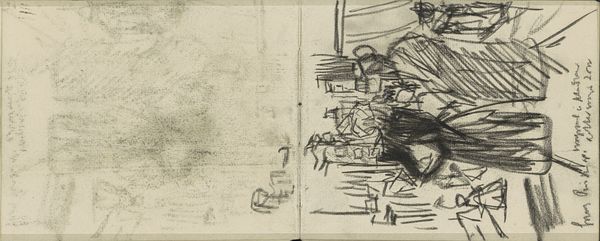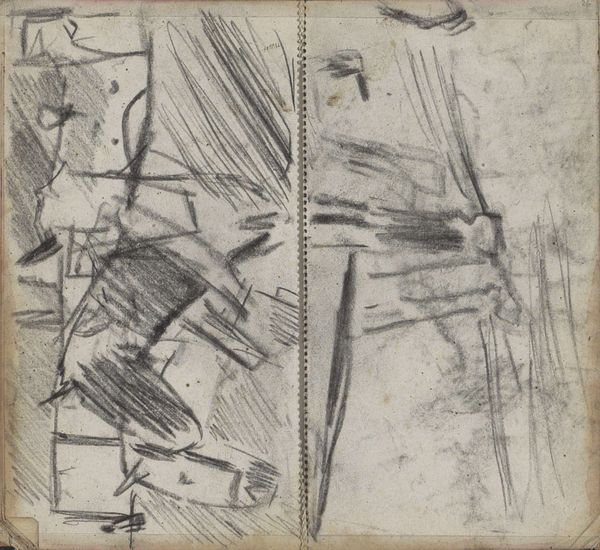
Copyright: Rijks Museum: Open Domain
Curator: This is "Vrouw en kind bij twee aangespannen paarden," or "Woman and Child with Two Harnessed Horses," created by George Hendrik Breitner in 1893. Editor: My immediate impression is of raw, unfiltered observation. There’s a sketchbook quality to it, a moment captured swiftly with pencil and graphite. Curator: Exactly! Breitner was known for his intimate, sometimes gritty, depictions of Amsterdam life. This drawing, with its sketchy lines, provides a window into the lives of working-class women. Think about the labor of these women. We glimpse them only in passing as a mother sits wearied by a young child, but their lived experiences must be full of hardship and struggle in ways we can't truly appreciate. Editor: And those lines, that frenetic energy. You can almost feel the artist wrestling with the materials. What strikes me is the directness. The pencil on paper is almost aggressively present. Curator: I find it poignant. Breitner wasn't just observing; he was implicating himself in their stories. He seems aware of the asymmetrical power dynamic and strives to highlight what bourgeois life hides. Editor: Perhaps. But the focus is firmly on process. How the image is made feels paramount. There is a focus on depicting a labor of the hand on a moment. Do you think it captures a certain truth or reality? Curator: Well, isn’t that what all art aims to do? To tell us truths about social reality or gendered identities, what better tools do we have than pencil and graphite? Editor: Point taken. This rough sketch has truly given me pause for thought. It is worth reflecting upon what a simple image produced in such a direct manner communicates so broadly. Curator: Agreed. The layers of social critique in it provide the perfect challenge. I wonder, whose stories haven't we told, that still desperately need telling?
Comments
No comments
Be the first to comment and join the conversation on the ultimate creative platform.
